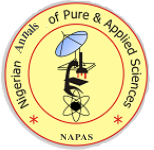Regional Assessment of Groundwater Potential Zone Using Remote Sensing, GIS and Multi Criteria Decision Analysis Techniques
DOI:
Keywords:
Groundwater potential zones, Multi-Criteria Decision Analysis, Analytic Hierarchy Process, Geographic Information System, Remote SensingAbstract
The growing demand for freshwater for domestic and industrial purposes is a current challenge in the Upper Niger River Basin Development Authority area. Consequently, there is heavy demand for groundwater resources to meet this need. This challenge has worsened due to the non-incorporation of integrated methods in groundwater exploration campaigns. Innovative scientific principles and quantitative assessment of groundwater resources are required for sustainable and proper management of the resources. Therefore, the objective of this paper is to exploit the potential application of remote sensing, Geographic Information System (GIS), and Multi-Criteria Decision Analysis (MCDA) techniques in mapping groundwater potential zones. To achieve this, seven factors deemed to have significant control over the occurrence and movement of groundwater viz. geology, lineament density, slope, drainage density, rainfall, land-use/land cover, and soil class were produced. These factors were assigned weights and normalized with respect to their relative contributions to groundwater occurrence using the Analytic Hierarchy Process (AHP). This resulted in groundwater potential zones that have been classified into four: Very good, Good, Moderate and Poor representing 7%, 27%, 43%, and 23% respectively. This result represents groundwater potential in the area and should be used as a preliminary reference in selecting prospective sites for detailed groundwater resource exploitation
Downloads
Published
How to Cite
Issue
Section
License
Copyright (c) 2020 JS Ejepu

This work is licensed under a Creative Commons Attribution-ShareAlike 4.0 International License.



 Contact Us
Contact Us Editorial Team
Editorial Team Join As A Reviewer
Join As A Reviewer  Request For Print Copy
Request For Print Copy


 Cprint Publishers
Cprint Publishers